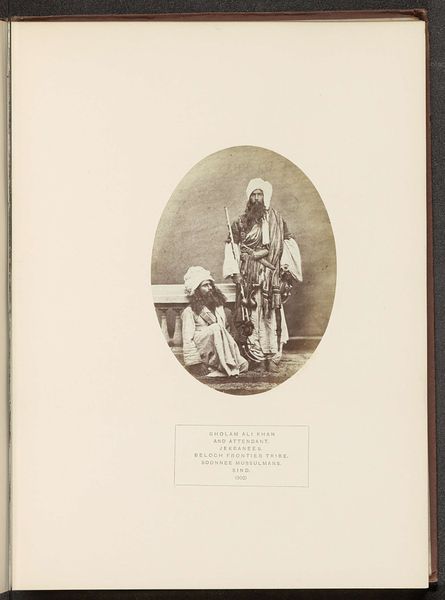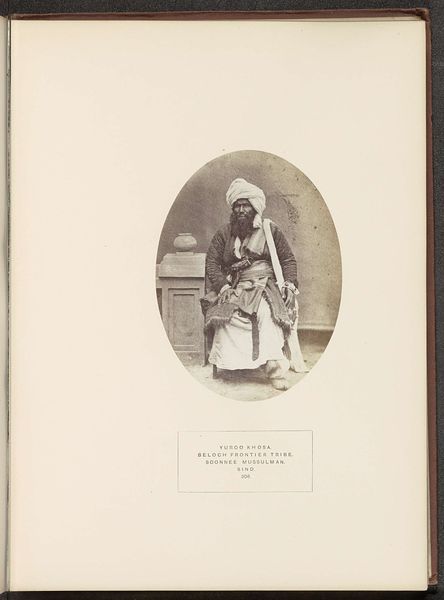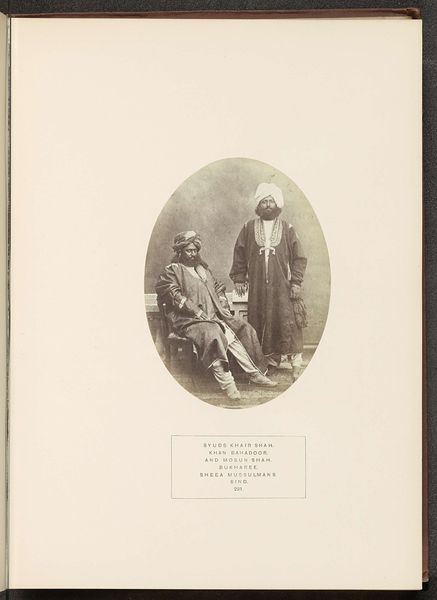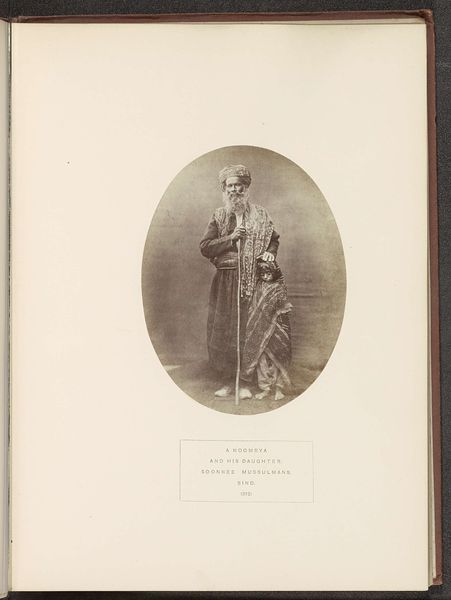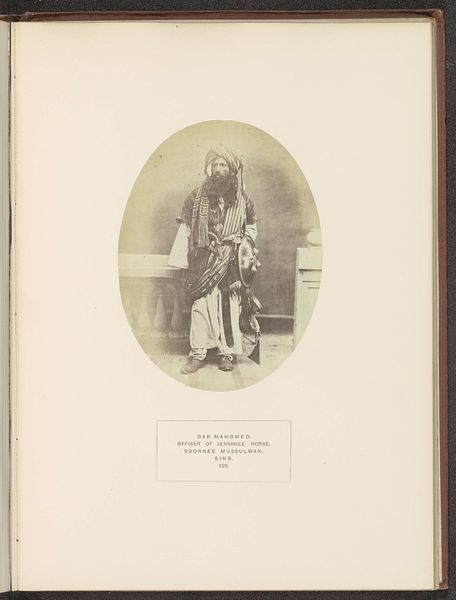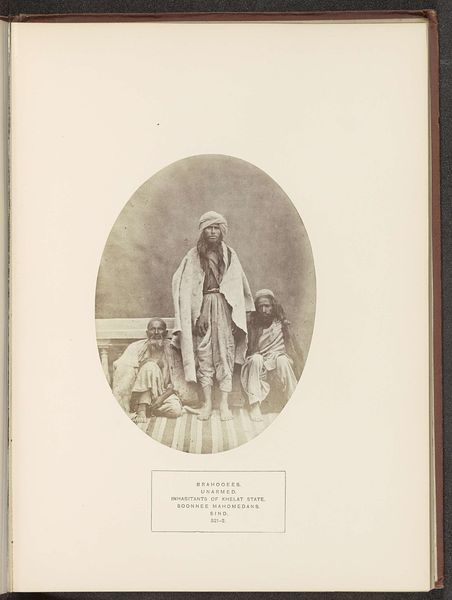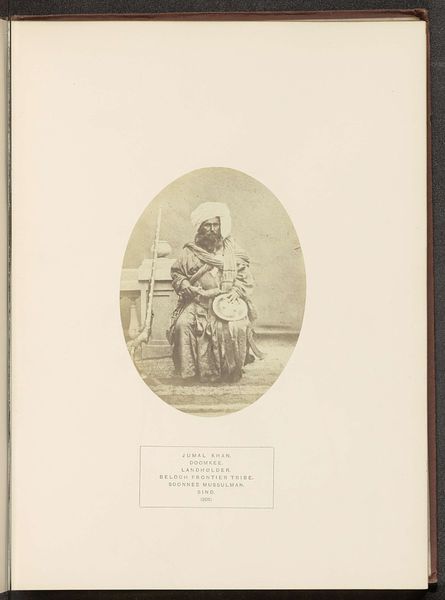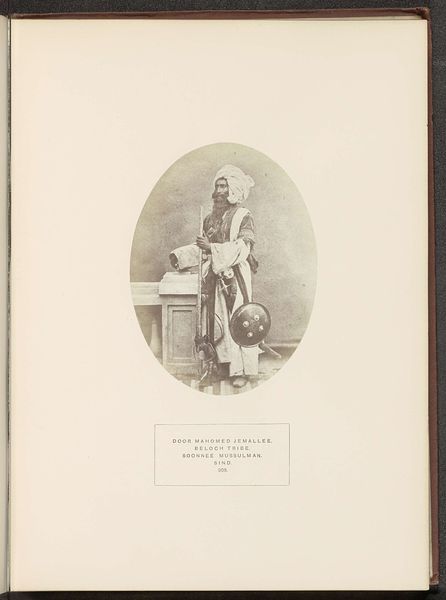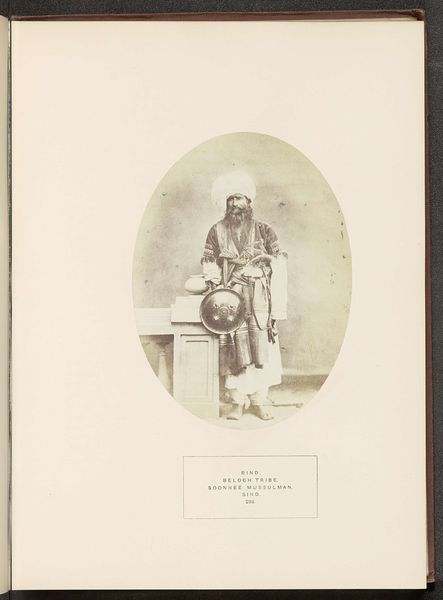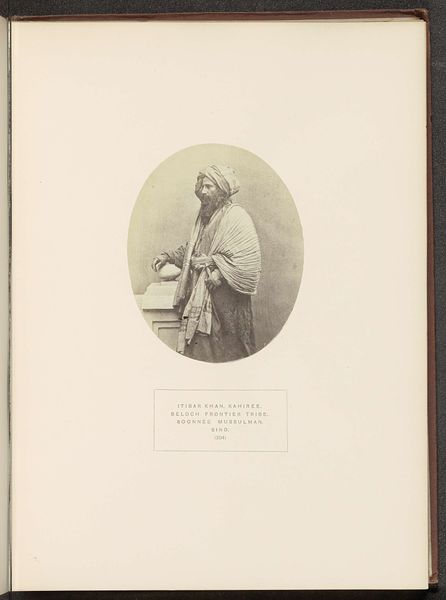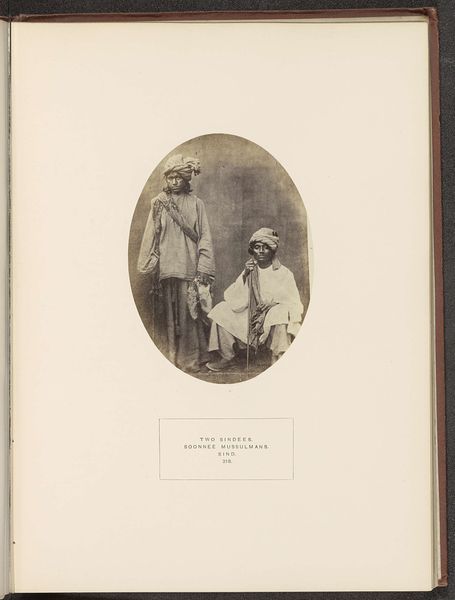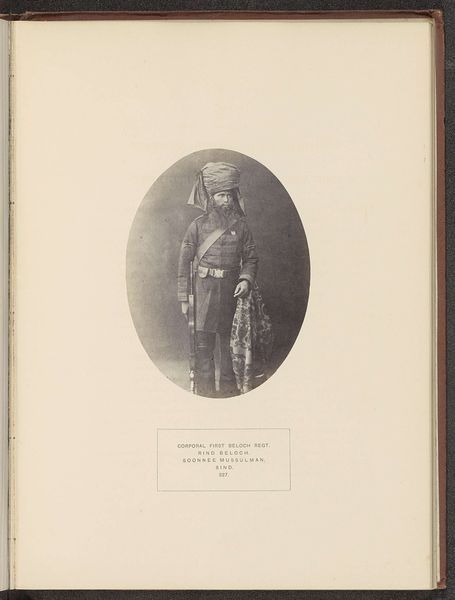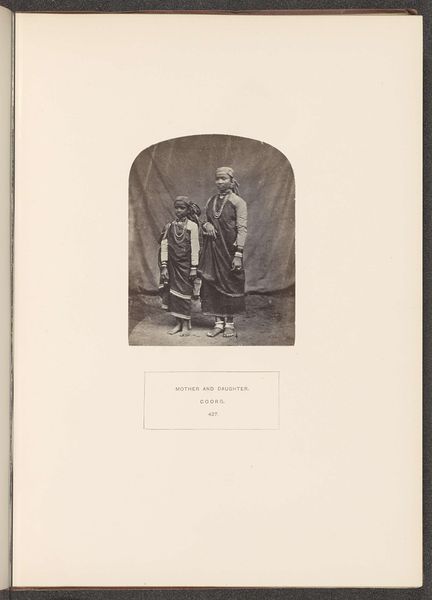
photography
#
portrait
#
photography
#
orientalism
#
islamic-art
Dimensions: height 145 mm, width 108 mm
Copyright: Rijks Museum: Open Domain
Editor: We’re looking at "Portret van Ghazee Khan en zijn zoon," a photograph taken before 1872 by Henry Charles Baskerville Tanner. It depicts a father and son in traditional attire, presented in sepia tones, creating an intimate yet formal image. What stands out to me is how much their turbans seem to symbolize their status and cultural identity. What do you see in this photograph? Curator: Absolutely. The turbans, first and foremost, are laden with meaning, often denoting not just status, but tribal affiliation, religious leanings, and even personal history. Think of them as visual biographies, silently communicating complex identities. Look closer: do you notice the weaponry? The sword at Ghazee Khan’s side, and the staff, like a spear, he’s holding? Editor: Yes, the staff makes him appear stately. What about the contrast between the standing and seated figures? Is there meaning embedded in that visual choice, as well? Curator: Indeed. The standing figure, Ghazee Khan, asserts a particular kind of dominance and authority, while the seated son, subtly positioned lower, signifies not only filial respect, but also perhaps a transition of power. The light, too, draws our eye to the father’s face first, reinforcing that established hierarchy. Do you get the sense of an idealized vision, maybe even a construct created for a Western audience? Editor: I do, now that you mention it. I suppose it romanticizes their image a little, fitting into what was considered "Orientalism" at the time. Thank you for explaining how something as simple as a turban can convey such layered meanings and identities! Curator: Precisely. That’s the power of visual symbolism. And it's interesting to consider how these symbols can simultaneously solidify identity while potentially reinforcing stereotypes, even unintentionally.
Comments
No comments
Be the first to comment and join the conversation on the ultimate creative platform.
